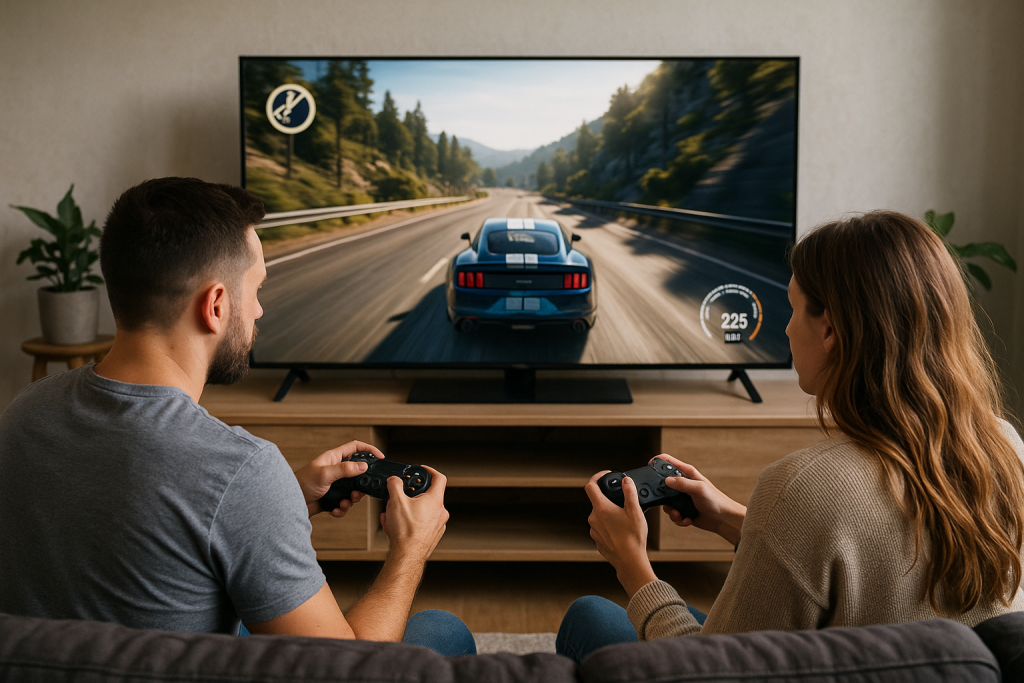Regular live tables mirror the floor: a dealer, a felt, and rounds that roll one into the next with few pauses. You sit down (virtually), place chips, the hand or spin resolves, and the next one begins almost right away. TV games flip that script. They run like a compact game show with short, self-contained rounds. A visible countdown opens a clean window to place picks; the timer locks, a clear reveal arrives for the whole audience at once, and the screen resets. That cadence matters when you’re new or short on time. You always know where a round begins and ends, so you spend less attention “catching up” and more on making one calm decision per cycle. If you enjoy structure – timer, lock, reveal – the studio style feels welcoming. If you prefer continuous, table-like rhythm, the classic streams still fit better.
Pace and decisions: how the clock shapes your choices
Live tables give you a flexible tempo. You can linger a moment over chip size, watch other seats, and ride a flow that feels like a real pit. TV games keep you on a tight, predictable clock; the whole audience places pick together, then waits for the reveal. That pressure can be good if it stops second-guessing, or tough if you like to tinker at the last second. Because rounds are short and identical, your routine matters more than streaks: one simple stake, one clear pick, repeat. If you want a quick primer on formats and what the studio screen is telling you, a guide to TV games online helps you see the decision windows, common layouts, and how presenters cue the countdown. So you don’t rush.
Mobile experience: buttons, reach, and mis-taps
On phones, the two formats feel different in your hands. Live tables often use classic layouts with chip trays, side bets, and a felt that you pinch-zoom to hit the right spot. It looks familiar, but small icons can invite mis-taps if the UI is crowded. TV games are designed for broadcast clarity: big panels for the main picks, large countdowns, and bold result areas. That simplicity cuts errors, especially in portrait mode. Still, speed can punish sloppy inputs. The fix is practical: hold the phone, so your thumb rests under the confirmation area, keep brightness steady for legible text, and turn down sharp sounds if they make you rush. If banners cover buttons after a win, wait a beat for the screen to clear before touching anything. Clean inputs beat fast fingers in both formats.
Presenter, tone, and how the game “feels”
The dealer at a live table speaks to a few seats and keeps table etiquette. The energy is calm; the camera stays close to the felt. In TV games, the presenter runs the show for everyone at once. They call the last seconds for bets, mark the reveal, and move the round forward with clear cues. That shared stage is the appeal for many new players: you never wonder what step you’re on, and the host’s cadence acts like a metronome. If you enjoy social buzz – chat, jokes, quick reactions – the studio vibe makes short sessions lively. If you prefer quiet focus and the ritual of a wheel or shoe, the table stream keeps the atmosphere you know. Neither is “better”; they solve different moods. Pick the tone that helps you make tidy choices and end sessions on time.
House rules explained on the screen
Both formats show rules, but the way you learn them shifts. Live tables lean on tradition – if you know the game, the layout is enough. TV games do more “show and tell.” The on-screen panel highlights what you can select this round, the timer tells you when picks lock, and the reveal area lights up the outcome in plain view. Multipliers or special segments, if present, are flagged early so you can react without panic. Spend one minute at the start reading the on-screen help or info icon. You’re looking for three things: what choices are available every round, when the lock happens, and how the result appears. Once you can answer those in a sentence, you can settle into a rhythm where every round feels the same – and that sameness is what keeps decisions clean.
- Time you have: want 10 quick, tidy rounds? TV games suit that. Want a longer, slower sit-down? Live tables.
- How you decide: prefer one choice on a countdown? Studio. Prefer a few extra beats to place chips? Table.
- Phone comfort: need big buttons and bold timers? Studio. Comfortable with zoom and classic layouts? Table.
- Mood: like a host and shared reveal? Studio. Like felt, ritual, and low chatter? Table.
- End rule: set it before you start – time box or number of rounds – and stop when you hit it in either format.
If the goal is clear, steady play, both paths work. Studio rounds give you a visible clock and a single clean decision; tables give you familiar flow and a touch more breathing room. Match the format to your attention, keep stakes modest, and let the layout you chose to do its job: present the choice, lock on time, and reveal the result, so your session stays calm and under control.

